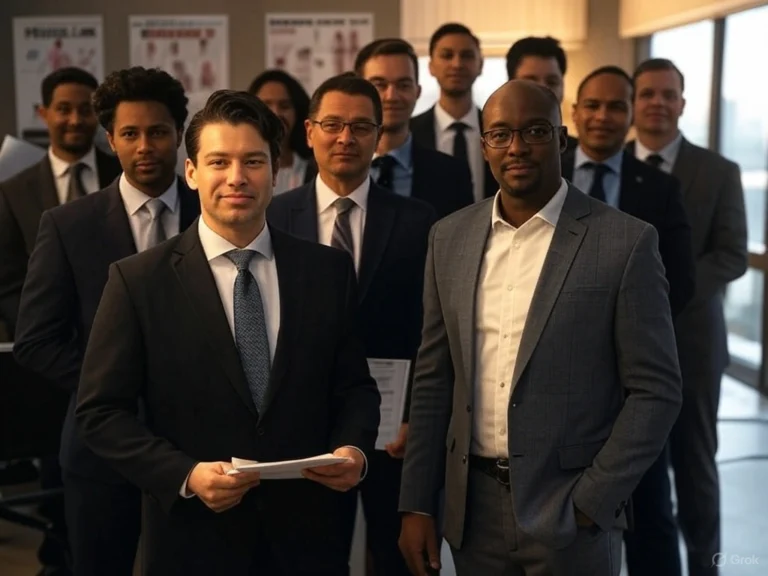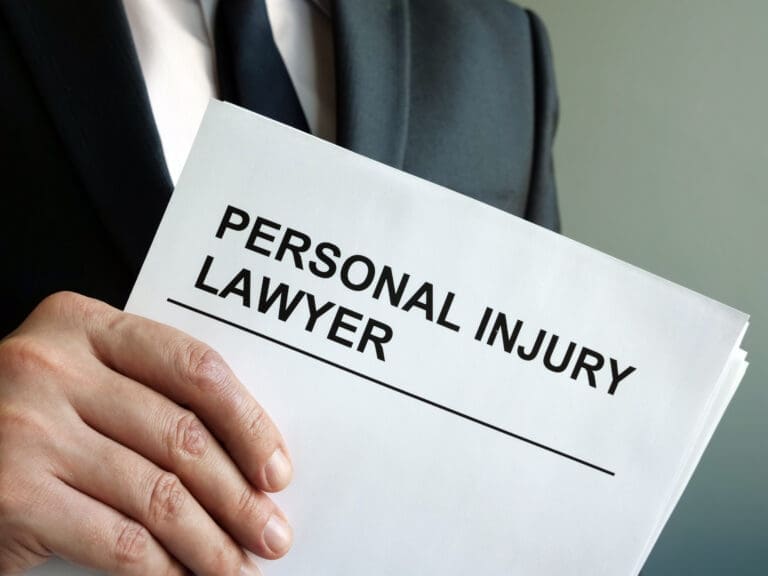
En arraignment process marks the formal initiation of criminal proceedings against an individual. This critical juncture in the criminal justice system serves not as a determination of guilt or innocence, but rather as a procedural foundation that establishes the framework for subsequent legal proceedings. For those unfamiliar with the judicial system, the first court appearance can be an intimidating experience fraught with uncertainty and apprehension.
Understanding what transpires during an arraignment hearing provides defendants with essential knowledge to navigate this process effectively. The arraignment constitutes the defendant’s initial appearance before a judge, where several significant events occur that shape the trajectory of the case. While seemingly brief in duration, this proceeding carries substantial legal implications that reverberate throughout the entirety of the criminal case.
The Purpose and Function of Arraignment
En first court appearance serves multiple essential functions within the criminal justice framework. Primarily, it establishes the formal commencement of criminal proceedings against the defendant. During this proceeding, the judge reads the charges, explains the potential penalties associated with those charges, and informs the defendant of their constitutional rights.
This procedural step ensures that defendants are fully apprised of the nature and gravity of the accusations leveled against them. The arraignment also provides an opportunity for the court to address preliminary matters such as legal representation and custody status before the case advances to subsequent stages.
The timing of arraignment varies by jurisdiction, but generally occurs promptly following arrest. In most instances, defendants appear before a judge within 24 to 48 hours of being taken into custody. This expeditious scheduling reflects the judicial system’s recognition of the importance of promptly addressing detention status while preserving constitutional protections.
Key Components of the Arraignment Process
During the arraignment hearing, several critical components unfold in a structured sequence. The judge begins by confirming the defendant’s identity to ensure the proper individual stands before the court. This verification, while seemingly perfunctory, constitutes an essential safeguard against mistaken prosecution.
Following identity confirmation, the judge reads the formal charges contained in the charging document, whether that be a complaint, information, or indictment. This recitation serves to officially notify the defendant of the specific allegations and applicable statutes. The defendant receives a copy of this document, providing written documentation of the charges for reference throughout the proceedings.
The court then addresses the defendant’s right to counsel, a fundamental constitutional protection. If the defendant lacks financial resources to retain private representation, the judge may appoint a public defender or court-appointed attorney. This ensures that even indigent defendants receive legal guidance throughout the criminal process.
Entering a Plea at Arraignment
One of the most consequential aspects of the arraignment process involves the defendant’s plea. At this juncture, the defendant must respond to the charges by entering a plea of guilty, not guilty, or in some jurisdictions, no contest. This decision carries significant implications for how the case proceeds through the judicial system.
A plea of not guilty initiates the adversarial process, triggering the prosecution’s obligation to prove guilt beyond a reasonable doubt. This plea preserves all the defendant’s rights and provides the defense attorney with the opportunity to negotiate with prosecutors or prepare for trial. Importantly, entering a not guilty plea at arraignment does not preclude the possibility of changing to a guilty plea at a later date if favorable terms are negotiated.
Conversely, a guilty plea constitutes an admission of the charged offense, effectively waiving the right to trial and certain constitutional protections. Before accepting such a plea, the judge must ensure the defendant understands the charges, the potential penalties, and the rights being relinquished. The judge must also verify that the plea is entered voluntarily and with a factual basis supporting the admission of guilt.
Bail Considerations and Pretrial Release
En arraignment hearing typically includes determinations regarding the defendant’s custody status pending trial. The judge evaluates various factors to decide whether the defendant should remain detained or be released, and if released, under what conditions.
When assessing bail, judges consider multiple variables including the nature and severity of the charges, the defendant’s criminal history, community ties, employment status, and potential flight risk. Based on these considerations, the court may order release on personal recognizance, which requires no financial deposit, or set a monetary bail amount that must be posted to secure release.
In addition to financial conditions, the court may impose various restrictions as terms of pretrial release. These might include regular check-ins with pretrial services, travel limitations, prohibition on contacting alleged victims or witnesses, drug testing, or electronic monitoring. Violation of these conditions can result in revocation of release and return to custody pending trial.
Differences Between Misdemeanor and Felony Arraignments
En arraignment process varies somewhat depending on whether the charges constitute misdemeanors or felonies. Misdemeanor arraignments typically follow a more streamlined procedure, often consolidating multiple procedural steps into a single appearance.
During a misdemeanor arraignment, the defendant frequently has the opportunity to resolve the case immediately by entering a guilty plea and receiving sentencing. Alternatively, the defendant may plead not guilty, at which point the court sets dates for pretrial conferences and potentially trial. The entire process for misdemeanors generally progresses more rapidly than felony proceedings.
Felony arraignments, by contrast, represent merely the initial step in a more protracted proceso. Following a felony arraignment, the case typically proceeds to preliminary hearings or grand jury proceedings to determine whether sufficient evidence exists to justify continued prosecution. This additional layer of scrutiny reflects the more serious nature of felony charges and their potential consequences.
Legal Representation During Arraignment
Securing competent legal representation for the first court appearance significantly impacts the trajectory of a criminal case. An attorney provides crucial guidance through the complexities of the arraignment, ensuring the defendant makes informed decisions that protect their rights and interests.
Defense counsel serves multiple vital functions during arraignment. The attorney reviews the charging documents to identify potential defects or legal issues, advises the defendant regarding plea options, advocates for reasonable bail conditions, and begins formulating defense strategies. This early intervention can profoundly influence subsequent proceedings and ultimate case outcomes.
While defendants possess the right to self-representation, proceeding without counsel at arraignment presents substantial risks. The intricacies of criminal procedure, potential consequences of various decisions, and opportunities for early strategic positioning generally necessitate professional legal guidance. Courts typically encourage defendants to secure representation, whether private or court-appointed, before entering pleas or making other significant decisions.
Preparing for Your Arraignment
Thorough preparation for the arraignment hearing enhances a defendant’s ability to navigate this critical proceeding effectively. Understanding what to expect and taking appropriate preparatory steps can alleviate anxiety and contribute to more favorable outcomes.
Prior to arraignment, defendants should gather essential documentation including identification, financial records (if seeking court-appointed counsel), and any paperwork related to the arrest or charges. Reviewing this information with an attorney, if possible, provides valuable context for the proceedings and informs strategic decisions.
Appropriate courtroom attire and demeanor demonstrate respect for the judicial process and may positively influence the court’s perception. Conservative, professional clothing conveys seriousness about the proceedings. Similarly, respectful behavior—addressing the judge as “Your Honor,” speaking only when directed, and maintaining composure—reflects recognition of the court’s authority and the gravity of the situation.
The Judge’s Role in the Arraignment Process
The presiding judge fulfills several essential functions during the arraignment process, serving as both procedural administrator and guardian of constitutional rights. The judge’s responsibilities extend beyond merely reciting charges and accepting pleas.
In their capacity as neutral arbiters, judges ensure that defendants understand the nature of the proceedings, the charges against them, and their constitutional protections. This includes verifying that defendants comprehend the potential penalties associated with the charges and the implications of various plea options. For defendants who appear confused or uncertain, judges may provide additional explanation or inquire whether further clarification is needed.
Judges also make critical determinations regarding legal representation, particularly for indigent defendants. After reviewing financial information, the judge decides whether the defendant qualifies for court-appointed counsel. This assessment balances the defendant’s right to representation against the allocation of public resources for legal services.
Potential Outcomes of the Arraignment
En arraignment hearing concludes with several possible outcomes that establish the framework for subsequent proceedings. These outcomes vary based on the defendant’s plea, the court’s determinations regarding custody status, and other case-specific factors.
For defendants who plead not guilty, the court sets dates for future proceedings such as pretrial conferences, motion hearings, or trial. The judge may also issue scheduling orders that establish deadlines for discovery, motions, and other pretrial matters. These timelines create the procedural structure within which the case will progress.
Defendants who plead guilty or no contest may proceed immediately to sentencing in some instances, particularly for minor offenses. More commonly, however, the court schedules a separate sentencing hearing to allow for preparation of presentence reports, victim impact statements, and other relevant information. This separation provides time for thorough consideration of appropriate penalties.
Special Considerations in Federal Arraignments
En arraignment process in federal court differs in several respects from state proceedings, reflecting the distinct procedural rules and institutional structures of the federal judicial system. Understanding these differences proves essential for defendants facing federal charges.
Federal arraignments occur before United States Magistrate Judges, who handle initial proceedings in federal criminal cases. These judges determine whether probable cause supports the charges and address preliminary matters such as detention, bail, and appointment of counsel. The formal arraignment typically takes place after indictment by a grand jury, which constitutes the primary charging mechanism in federal prosecutions.
The Federal Rules of Criminal Procedure govern the timing and conduct of federal arraignments. Rule 5 mandates that defendants appear before a magistrate judge “without unnecessary delay” following arrest. This prompt appearance requirement safeguards defendants’ rights and ensures timely judicial oversight of federal prosecutions.
Virtual Arraignments: A Growing Trend
Technological advancements and practical necessities have accelerated the adoption of virtual arraignment proceedings across many jurisdictions. This evolution, particularly pronounced following the COVID-19 pandemic, presents both opportunities and challenges for defendants and the judicial system.
Virtual arraignments utilize videoconferencing technology to connect defendants, attorneys, prosecutors, and judges without requiring physical presence in the courtroom. This format offers logistical advantages, including reduced transportation costs, decreased security concerns associated with defendant movement, and enhanced scheduling flexibility. For defendants released pretrial, virtual appearances may eliminate travel burdens and minimize work disruptions.
However, remote proceedings also present potential complications. Establishing effective attorney-client communication may prove more challenging in virtual settings, potentially compromising the quality of legal representation. Technical difficulties can disrupt proceedings and create confusion. Additionally, the solemnity and formality of court proceedings—important elements that reinforce the gravity of the criminal process—may be diminished in virtual environments.
The Arraignment’s Impact on Professional Licenses
For defendants employed in licensed professions, the arraignment process carries implications beyond the immediate criminal case. Many professional licensing boards impose reporting requirements when licensees face criminal charges, creating collateral consequences that extend into the professional sphere.
Professions such as law, medicine, nursing, teaching, and financial services typically maintain ethical standards that include disclosure obligations regarding criminal proceedings. While the arraignment itself—merely the formal presentation of charges—does not constitute a finding of wrongdoing, the existence of pending charges may trigger reporting duties and potential disciplinary proceedings.
These professional ramifications underscore the importance of comprehensive legal representation that addresses both the criminal case and its potential impact on licensure. Defense attorneys should work collaboratively with professional licensing counsel to develop strategies that protect both the defendant’s liberty interests and professional standing.
Multiple Defendant Arraignments
Cases involving co-defendants present unique considerations during the arraignment process. When multiple individuals face charges stemming from the same incident or alleged criminal enterprise, the court must navigate additional procedural complexities.
Co-defendants may be arraigned jointly or separately, depending on jurisdictional practices and case-specific factors. Joint arraignments promote efficiency but may complicate individual defendants’ ability to assert distinct positions or interests. Separate arraignments provide greater individualization but consume additional judicial resources and may create scheduling challenges.
The presence of co-defendants introduces strategic considerations regarding plea decisions, as each defendant’s choices potentially impact others. Cooperation agreements, where one defendant provides testimony against others in exchange for leniency, often emerge during or shortly after arraignment. These dynamics necessitate careful consideration of individual and collective defense strategies from the earliest stages of the proceedings.
The Role of Victims in the Arraignment Process
While victims do not participate directly in the arraignment hearing, their presence and interests influence various aspects of the proceeding. Understanding the victim’s role provides a more comprehensive perspective on this initial court appearance.
Victims frequently attend arraignments to observe the formal commencement of proceedings against the alleged perpetrator. This attendance serves both informational and psychological purposes, allowing victims to witness the judicial response to the reported crime and begin processing their experience within the framework of the criminal justice system.
In some jurisdictions, victim input factors into bail determinations and release conditions. Prosecutors may convey victims’ safety concerns to the court, potentially resulting in no-contact orders or other protective measures as conditions of pretrial release. These provisions aim to balance the defendant’s presumption of innocence with legitimate victim protection interests.
Preliminary Assessment of Case Strength
Although not designed as an evidentiary proceeding, the arraignment process sometimes includes preliminary evaluation of the prosecution’s case. This assessment, while limited in scope, may influence early case trajectory and strategic decisions.
In certain jurisdictions, judges review charging documents and police reports during arraignment to verify probable cause supporting the charges. This review serves as a basic threshold determination that the allegations, if proven, would constitute the charged offense. When evidence appears manifestly insufficient, charges may be reduced or dismissed at this early stage, though such outcomes remain relatively uncommon.
This preliminary assessment provides defendants and counsel with initial insights regarding potential case strengths and weaknesses. While far from comprehensive, this information contributes to early strategic planning and may inform decisions regarding plea negotiations, bail arguments, and investigative priorities.
Public Nature of Arraignment Proceedings
En first court appearance typically occurs in open court, accessible to members of the public and media. This transparency, while fundamental to American judicial principles, creates additional considerations for defendants, particularly in high-profile cases.
The public nature of arraignments means that information revealed during these proceedings—including the charges, the defendant’s appearance, and bail determinations—may receive media coverage and public attention. For defendants in prominent positions or cases attracting significant interest, this publicity can impact reputation and privacy regardless of the case’s ultimate outcome.
Defense attorneys often provide guidance regarding media management strategies, including whether to make public statements, how to handle courthouse encounters with journalists, and approaches for protecting privacy to the extent possible within the constraints of public proceedings. These considerations form an important component of comprehensive representation, particularly for defendants concerned about collateral consequences of publicity.
Implications for Related Civil Litigation
Criminal charges frequently give rise to parallel civil proceedings, creating intersections between the arraignment process and potential civil liability. Understanding these connections helps defendants navigate both criminal and civil dimensions of legal jeopardy.
Information disclosed during arraignment may subsequently factor into related civil litigation. For instance, a defendant arraigned on assault charges may later face a civil lawsuit seeking damages for the same alleged conduct. While the criminal and civil systems operate independently, with different standards of proof and procedural rules, developments in one sphere often influence the other.
Strategic decisions made at arraignment, including plea considerations and statements made in open court, potentially impact civil exposure. This reality underscores the importance of coordinated representation that accounts for both criminal defense priorities and civil liability concerns when applicable.
Mental Health Considerations in Arraignment
For defendants with mental health concerns, the arraignment hearing may present the first opportunity to address competency issues. These considerations introduce additional procedural dimensions to the initial court appearance.
When questions arise regarding a defendant’s ability to understand proceedings or assist in their defense, defense counsel may raise competency concerns during arraignment. In response, the judge may order psychological evaluation to determine whether the defendant meets the legal standard for competency to stand trial. This assessment examines the defendant’s current mental state rather than their mental condition at the time of the alleged offense.
If competency issues appear substantial, the arraignment process may be continued pending evaluation results. Should evaluations indicate incompetency, the court typically orders treatment aimed at restoring competency before proceeding with the case. These procedures reflect the fundamental principle that criminal proceedings require defendants capable of meaningful participation in their defense.
Multi-Jurisdictional Considerations
Defendants facing charges in multiple jurisdictions encounter additional complexities during the arraignment process. Coordinating between different court systems requires careful navigation of potentially conflicting schedules, requirements, and priorities.
When a defendant faces charges in both state and federal courts, or across multiple states, questions arise regarding which jurisdiction proceeds first and how custody arrangements operate. These determinations typically involve communication between the respective prosecutors’ offices, sometimes formalized through interstate agreements or federal writs.
Defense representation in multi-jurisdictional cases demands particular expertise in managing parallel proceedings and negotiating comprehensive resolutions. Attorneys must coordinate defense strategies across jurisdictions while addressing practical challenges such as court appearances in different locations and potentially conflicting release conditions.
Post-Arraignment Proceedings
The conclusion of the arraignment process establishes the foundation for subsequent proceedings that vary based on case type, jurisdiction, and the defendant’s plea. Understanding this progression provides context for the arraignment’s place within the broader criminal justice framework.
For defendants who plead not guilty to felony charges, post-arraignment proceedings typically include discovery exchanges, where the prosecution provides evidence to the defense, and preliminary hearings or grand jury proceedings to determine whether sufficient evidence exists to proceed to trial. These steps precede pretrial conferences, motion hearings, and potentially trial.
Misdemeanor cases generally follow a more streamlined path, moving from arraignment to pretrial conferences and then to trial if not resolved through plea negotiations. The timeline for these proceedings varies significantly by jurisdiction and case complexity, ranging from weeks to months or even years for particularly complex matters.
The Significance of the Arraignment in Case Strategy
While seemingly procedural in nature, the first court appearance establishes strategic positioning that influences the entire case trajectory. Decisions made during arraignment create foundations for subsequent negotiation, litigation, or resolution.
The arraignment represents the first opportunity for defense counsel to assess the prosecution’s approach, including charging decisions and bail recommendations. These early indicators provide valuable insights regarding prosecutorial priorities and potential flexibility in negotiations. Similarly, the judge’s handling of initial matters may suggest judicial perspectives relevant to future proceedings.
Plea decisions at arraignment establish the initial framework for case resolution. A not guilty plea preserves all options while creating space for investigation, discovery review, and negotiation. Strategic considerations at this stage include maintaining maximum flexibility while positioning the case favorably for either negotiated resolution or contested proceedings.
Conclusion: Navigating the Arraignment Successfully
En arraignment process constitutes a pivotal moment in criminal proceedings that establishes the foundation for all subsequent litigation. While brief in duration, this initial court appearance carries significant implications for case trajectory, pretrial liberty, and ultimate outcomes.
Successful navigation of arraignment requires understanding its procedural components, securing competent legal representation, and making informed decisions regarding pleas and other matters. Preparation, appropriate courtroom demeanor, and strategic awareness contribute to effective management of this critical stage.
For defendants and their counsel, the arraignment presents both challenges and opportunities. By approaching this proceeding with knowledge and strategic purpose, defendants position themselves advantageously for the legal journey ahead, whether that involves negotiated resolution or contested litigation. The decisions made during this initial appearance reverberate throughout the case, underscoring the importance of thorough preparation and thoughtful engagement with the arraignment process.
Citations:
- Guide to Understanding Criminal Case Process
- Pretrial Appearances in Court Explained
- Arraignment Process Simplified
- Initial Appearance in Federal Court
- Arraignment Process in Texas Explained
- Finding Low Competition Keywords Guide
- Steps to Choose Legal Content Keywords
- Tips for Your First Court Arraignment
- Benefits of Long-Tail Keywords
- Court Glossary of Legal Terms
- Northwestern Law Review Article
- Clarence Thomas Biography
- Military Arraignment Process Guide
- What to Expect at Your Arraignment
- First Court Appearance Overview
- Low Competition Keywords Strategy
- Long-Tail Keywords Explained
- Synonyms for the Word Arraign
- Minnesota Court Rules Overview
- Miami Law Faculty Articles
- Justice Thomas Jurisprudence Decisions
- Arraignment Purpose and Laws
- Illinois Criminal Court Process
- Guide to Low Competition Keywords
- Massachusetts Arraignment Guide
- CSBSJU Psychology Publications
- Arraignment in North Carolina Explained
- Finding Low Competition Keywords with SEMrush
- Illinois Misdemeanor Court Guide
- Justice 101 Initial Hearing
- Criminal Arraignment in Illinois
- YouTube Video on Legal Topic
- First Appearance by State Guide
- Arraignment in Criminal Procedure
- What Happens During an Arraignment
- First Court Appearance for Charges
- YouTube Video on Legal Process
- Steps in Federal Criminal Process
- Criminal Arraignment in Texas
- Illinois Criminal Justice System Guide
- How to Find Low Competition Keywords
- Choosing SEO Keywords for Legal Practice
- Semantic Analysis Algorithms Guide
- First Criminal Court Appearance Tips
- YouTube Video on Legal Topic
- Legal Keywords Competitive Analysis
- ASHA Publication on Semantic Analysis
- Massachusetts Arraignment Expectations
- Identifying Low Competition SEO Keywords
- Keywords for Lawyers Guide
- Semantic Feature Analysis for Anomia
- What to Expect at First Court Hearing
- Long-Tail Keywords for Law Firms
- Conductor on Long-Tail Keywords
- Long-Tail Keywords for Legal Success
- Understanding the Arraignment Process
- Long-Tail Keywords for Law Firm Visibility
- Thesaurus Entries for Arraignment
- California Self-Help Arraignment Guide
- Collins Dictionary Arraignment Definition
- Creating a Search Term List Guide
- Website Architecture for SEO
- Vocabulary Definition of Arraignment
- Effective Search Terms Cheat Sheet
- SEO Guide for Florists
- Clarence Thomas Rulings Analysis
- Oyez Profile of Clarence Thomas
- Reddit Discussion on Clarence Thomas
- Hacker News Thread on Topic
- Justia on Clarence Thomas
- Analysis of Supreme Court Writing Style
- Cornell Law Thomas Decisions
- North Carolina Pretrial Release
- Thomas’s Original Intentions
- Politico on Thomas’s Rights Views
- CSBSJU Psychology Publications
- ACL Anthology Research Paper
- Low Competition Keywords Strategy








